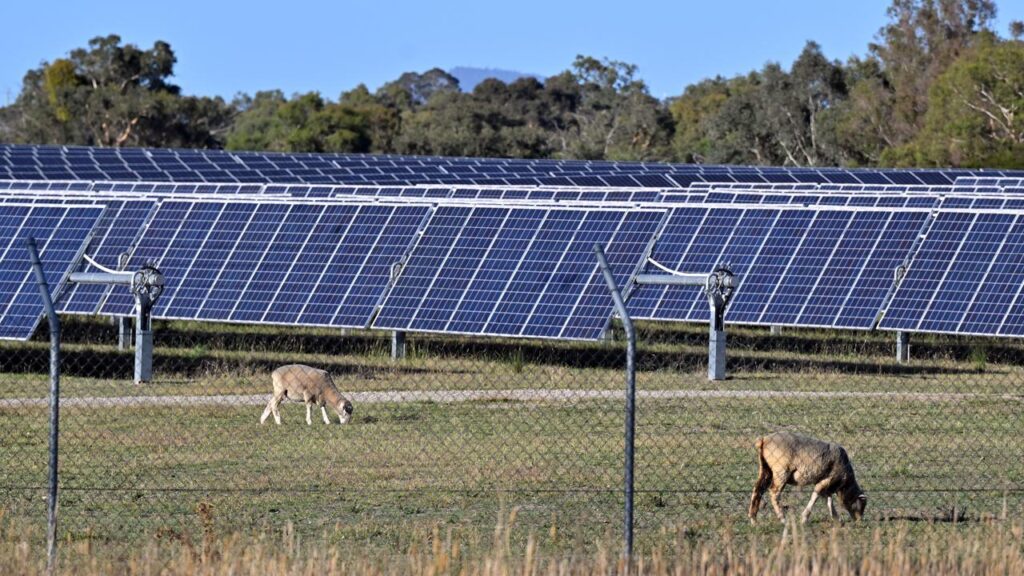Sunny outlook: big solar farms given tick by neighbours
Jennifer Dudley-Nicholson |

Large-scale solar farms are more popular with neighbours than some might think, with a study finding four in every five nearby residents would not oppose further projects being developed in their area.
The US study, published in an international science journal on Tuesday, also found more than two in every five people surveyed felt positive about the renewable energy projects located near them.
Australian experts say the findings mimic the experience of those living near solar farms in regional areas, although they have called for greater education and transparency to ensure continuing community acceptance.
The research comes as the number of renewable energy projects ramps up in Australia, with 1.2 gigawatts of solar capacity added in 2024 in 14 large-scale projects, according to the Clean Energy Council.
The American study, published in Frontiers in Sustainable Energy Policy, surveyed 979 residents across 39 states living within five kilometres of a large-scale solar farm.
It found most residents felt positive (43 per cent) or neutral (42 per cent) about the solar project in their neighbourhood, while only 15 per cent felt negatively about it.
Asked whether they would approve of more solar projects being built in their area, 82 per cent expressed support or felt neutral, and 18 per cent said they would be opposed.

The size of solar projects had the greatest impact on residents’ opinions, study author and University of Michigan associate professor Sarah Mills said, but the positive message from locals was clear.
“Just as has been documented for wind energy, we found that the NIMBY – not in my backyard – explanation for opposition to solar was overly simplistic and unhelpful in explaining neighbours’ sentiments,” Dr Mills said.
The study found some residents living near solar farms were poorly informed about them, she said, and recommended developers engage further with local communities.
The findings are similar to those from a Farmers from Climate Action study in 2024 that found 73 per cent of people in renewable energy zones supported wind and solar projects.
Australians were widely supportive of renewable energy as the recent federal election proved, RE-Alliance national director Andrew Bray said, and that approval extended to people in regional areas directly affected by solar projects.
“These are the sort of numbers we see supporting renewable technologies both in abstract and when you go to regional areas where these technologies are being built,” he told AAP.
“Often the headlines you see around these things are not always telling the full stories.”
Greater support and engagement should be provided to those living in renewable energy zones to keep them informed, Mr Bray said, and the federal government should consider establishing local energy hubs to help them access accurate information.
“The engagement has not been uniformly up to scratch,” he said.
Australia developers established 21 renewable energy projects in Australia in 2024 according to the Clean Energy Council, including 14 large-scale solar developments and six wind projects.
AAP


